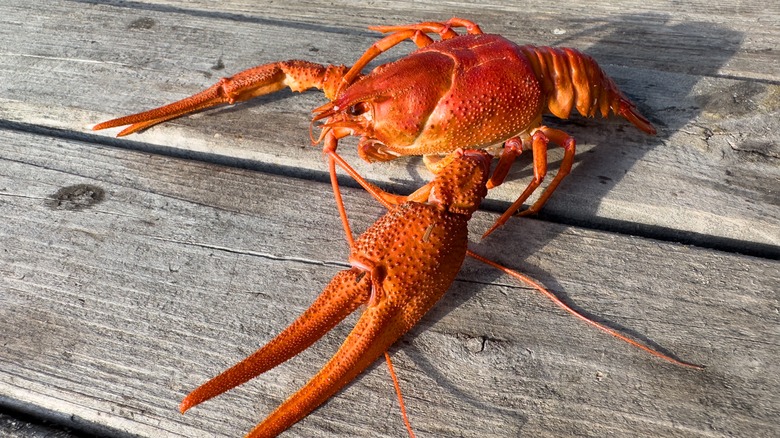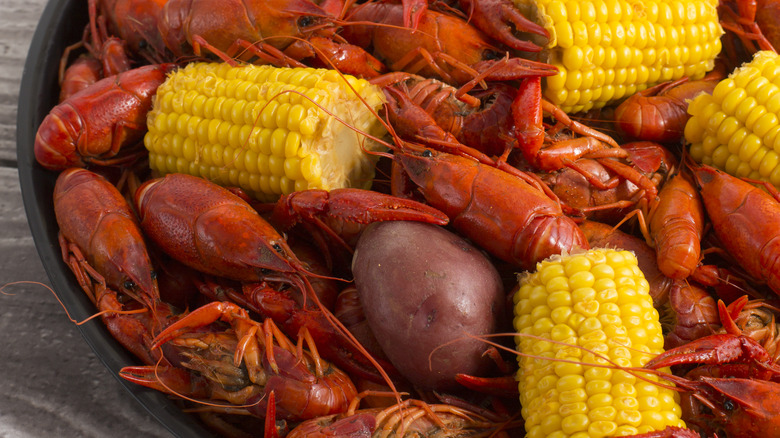What Determines The Start And End Of Crawfish Season?
As far as hunting is concerned, more creatures have designated seasons than just ducks and rabbits — shellfish must be gathered at the right times of year, as well. In particular, crawfish-trapping season differs depending on the temperature and weather, as well as what region of the U.S. you live in. So how do you determine the best times to catch and consume these delicious crustaceans? Fortunately, there are determining attributes to look out for that can help you mark the start and end of crawfish season.
Ideally, in Louisiana, which accounts for an estimated 90% of the nation's crawfish industry, crawfish season should run from around January to July. The difference in weather patterns makes this range of months different in California, where the season generally runs from July to October; alternatively, in Washington, the season usually starts in May and ends in October.
Bountiful or slow, crawfish season ends once the wave of shellfish has been depleted, which typically coincides with the warmer months, as this is when crawfish burrow and re-breed. Coastline weather plays a huge part in when the boom of crawfish might be ripe for pilfering. To remain active, crawfish need water that's above 60 degrees Fahrenheit, and colder weather means colder water. When the crawfish cease being active, they stop feeding; they even burrow into the mud and remain dormant, leaving traps empty.
A slow season may lead to higher crawfish prices
If the weather gets too hot or dry during crawfish's non-breeding months, their mortality rate can significantly increase. This means that timing the ideal crawfish haul may require some luck. The seafood merchants who trust trappers to ensure their stock must contend with the simple reality that traps sometimes come back empty.
When the weather dictates a slow season, the price of crawfish may rise due to scarcity, likely scaring off potential consumers who might not want to pay more than they did in previous years. In fact, the late start to the 2024 season has practically doubled the price of crawfish compared to previous years. So, if you end up having to pay an exorbitant price for a shellfish dinner (or worse yet, you miss the end of the season entirely), don't blame your waiter — blame inconsistent atmospheric conditions.
Watching weather patterns and the ever-changing climate is the best way to determine not only when the season kicks off, but whether or not it will be fruitful. Here's hoping the next season will be a booming one — if only to ensure the success of everyone's seafood boils.

